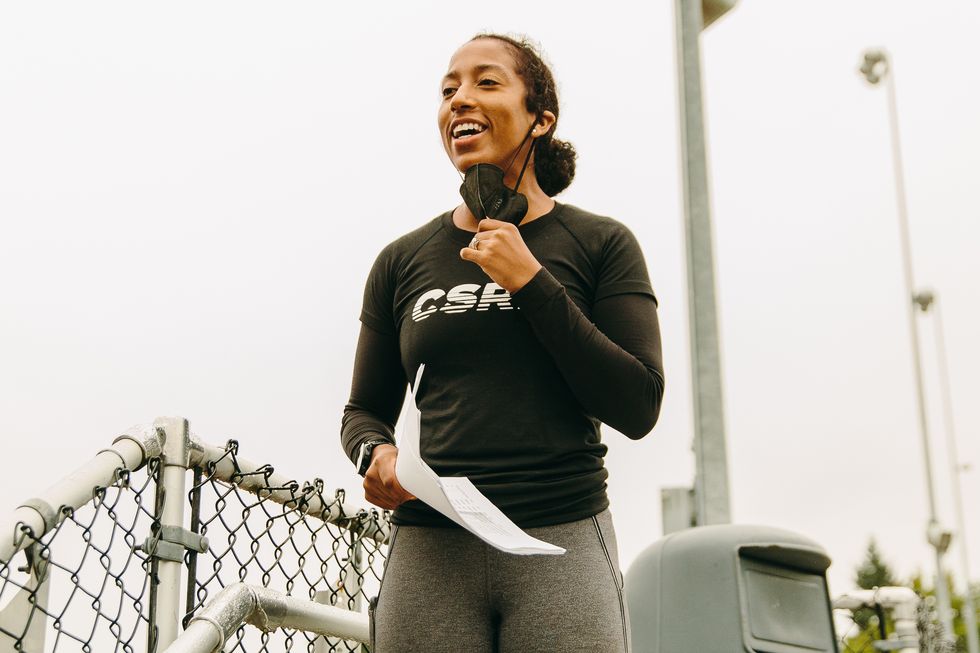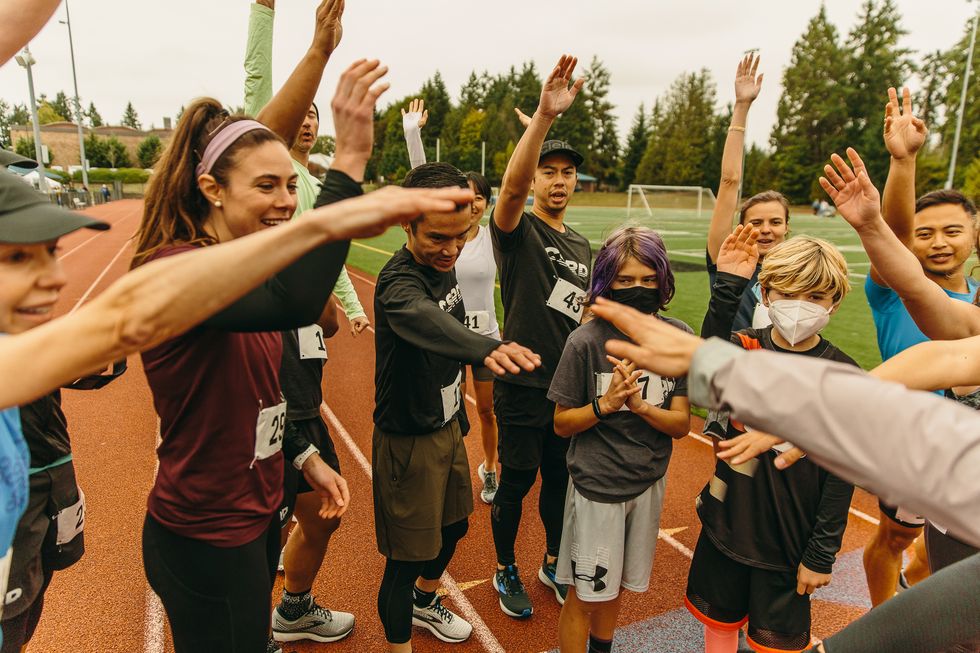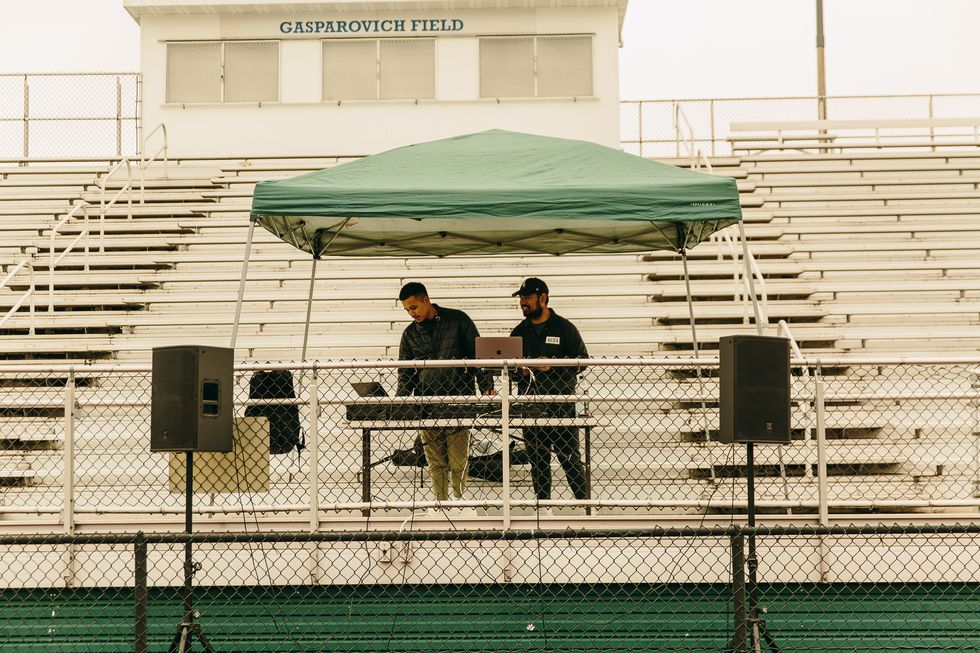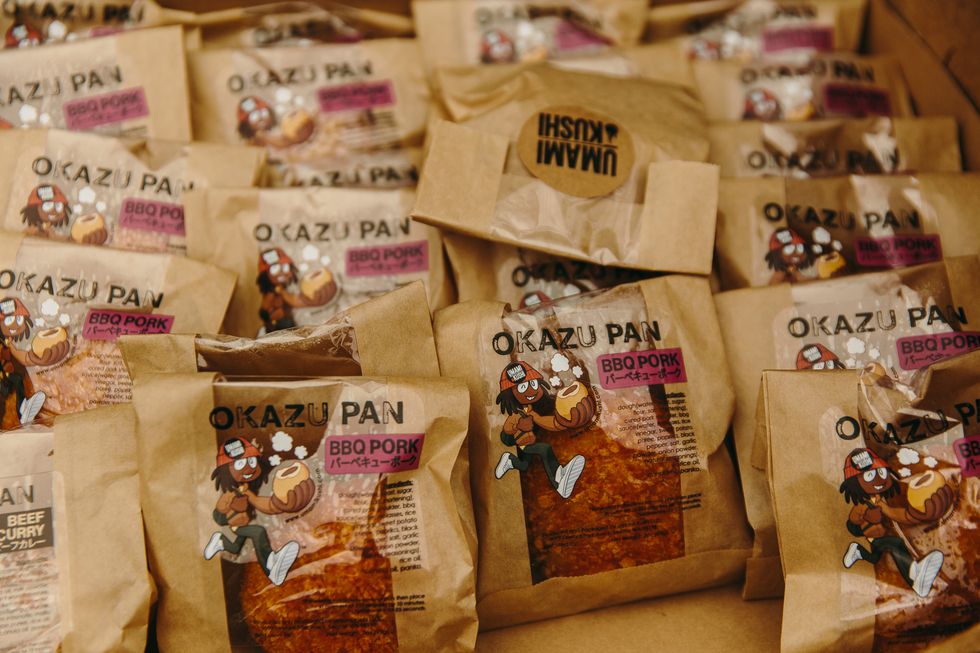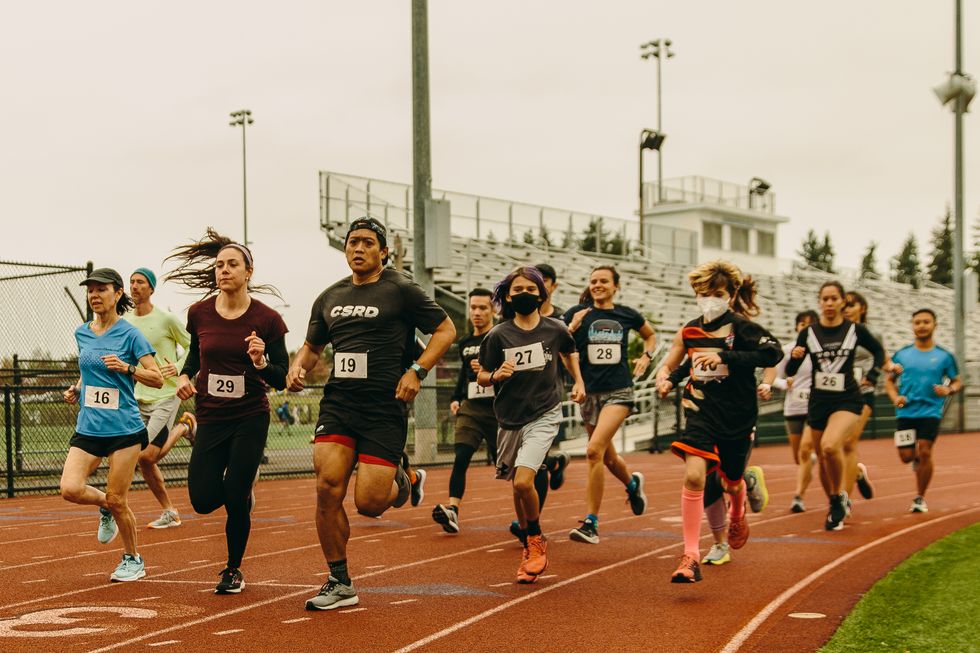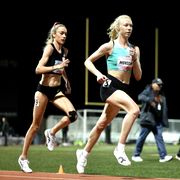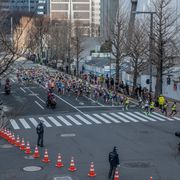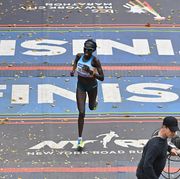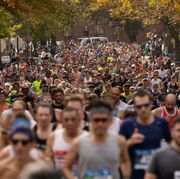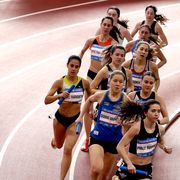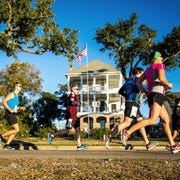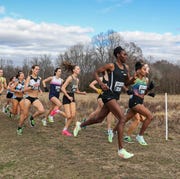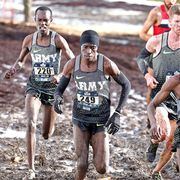Seattle is known for its rain, amazing food, scenic outdoor adventures, and the “Seattle Freeze,” otherwise known as a general unfriendliness to new people in the city. Because of this, five years ago three Seattle-based runners—myself, David Jaewon Oh, and Miran McCash—cofounded Club Seattle Runners Division (CSRD) to serve as a welcoming community for all paces and faces.
Some people run their first, fastest, or longest miles with our group. Others run their funnest miles. It’s always been about community over competition for us.
We’ve hosted hundreds of runs over these five years and partnered with people and organizations on events. All this momentum got us wondering if we could create a race highlighting the things that are most important—community, connection, and giving back.
Although we had grand ideas for our first race—such as selling event T-shirts and mugs, printing custom race bibs, filling the entire infield of the track with vendors—our leadership and members agreed to start with the basics and create the All City Mile.
By enlisting the help of several vendors to provide food and beverages, we supported local businesses and raised more than $1,000 for Girls on the Run Puget Sound, a local non-profit.
Join Runner's World+ for unlimited access to the best training tips for runners
Thinking about hosting a race with your growing running crew? Keep these pointers in mind to put on a successful event for your community.
Make sure your race length and location support your goals
It was important for us to start with a race where we felt community was the focal point and participants could have a good experience and feel supported. We chose a mile on the track because we felt it was the most accessible distance, and it was also accessible to non-runners who wanted to cheer.
Share the workload and expand your reach
Our reach would be bigger if we collaborated with another running group, in our case, Seattle Green Lake Running Group. We charged an entry fee, but everyone agreed 100 percent of that would be donated to Girls on the Run, which several members between the two groups are heavily involved with. We scheduled an initial call to talk through the logistics and assign tasks between each group. Then we continued to touch base a few times a week with updates. We got our entire race together in less than two months, but we learned throughout the process that the sooner you get the process going, the better.
Lock in your location and time
Before we could advertise, we needed to reserve a track. We emailed our local parks department to figure out what tracks had openings and then secured a permit. We ended up choosing a late morning time slot on Sunday, October 3, at Ingraham High School’s track, which is accessible for people coming from different parts of the city and has ample free parking. Doing it earlier in the day also meant we didn’t need to worry about getting the lights turned on, and we hoped to catch the warmest part of the day given this was a fall race.
Create a place where all the event details live
Once the event time and location were confirmed, we set up a Race Roster page. Race Roster allows you to create your own event page, or you can have them create a page for you free of charge in about three to five business days.
Event information, along with participant registration and payment information, was found here. Because we organized runners into timed heats, we needed to know everyone’s anticipated mile time along with their contact information. Race Roster also has a standard waiver that all participants had to sign when they registered. If needed, you can customize based on your needs.
Support local and enlist your friends
We wanted to level up our event, so we hired a local DJ, Jon Retotal, who used to run with us. We got official timing services from Magnuson Timing. And designer Amy Camber offered to help us make a logo that we used to advertise the event.
Many of the vendors we used we found by asking around in our running networks and social media. We also wanted to highlight some of our favorite local restaurants and chefs by offering food and coffee. (Shout out to Black Coffee Northwest, Musangtino’s, and Umami Kushi.) It took quite a bit of back and forth to finalize the details with our vendors. Starting earlier would have reduced some of the last-minute stress, like confirming vendor arrival time and availability.
The day of
We set up a volunteer sign up sheet on race day with representation from both running groups. We assigned tasks to everything from directing traffic in the parking lot to setting up the food tables and helping manage the heat assignments and results reporting.
Given the size of our event, we went with hand timing, which was more affordable than the chip timing options. As runners came by we would record their bib number and time and match the names after the fact. This did require extra volunteers, but we couldn’t justify the cost of chip timing for our 55 person group.
We asked vendors to arrive an hour before the start and realized that setting up took longer than we anticipated. We definitely recommend padding in extra time for everything, especially setting up your first race.
As race organizers, you’ll feel like you’ll need to be in many places at once, but it’s important to address the crowd early and often so participants know what’s going on, feel welcome, and can work through the race day nerves. The DJ had a microphone, which we used for announcements. I made the first announcement to welcome people and remind them of the order of events (which we also shared with people ahead of time). We passed the mic after each heat so that other leaders had opportunities to connect with the participants in meaningful ways.
Luckily we have a professional photographer as one of our CSRD cofounders, David Oh, but we highly recommend assigning someone specifically to capture photos of the race. Photos have been a continued way for us to spread the word about our running crew and for participants to share the fun experiences they’ve had with us with their networks. Having someone manage logistics and pictures would mean a lot of the day wouldn’t get captured.
Throughout the event, make sure you have a clear way to keep people updated on what’s happening and where they need to be. We learned you cannot over communicate those details. Several times throughout the event, be sure to thank not only the participants, but also ALL of your vendors and volunteers for supporting the event. If you wait until the end, some people may have already left and you want to be sure to spread the love for all to receive.

